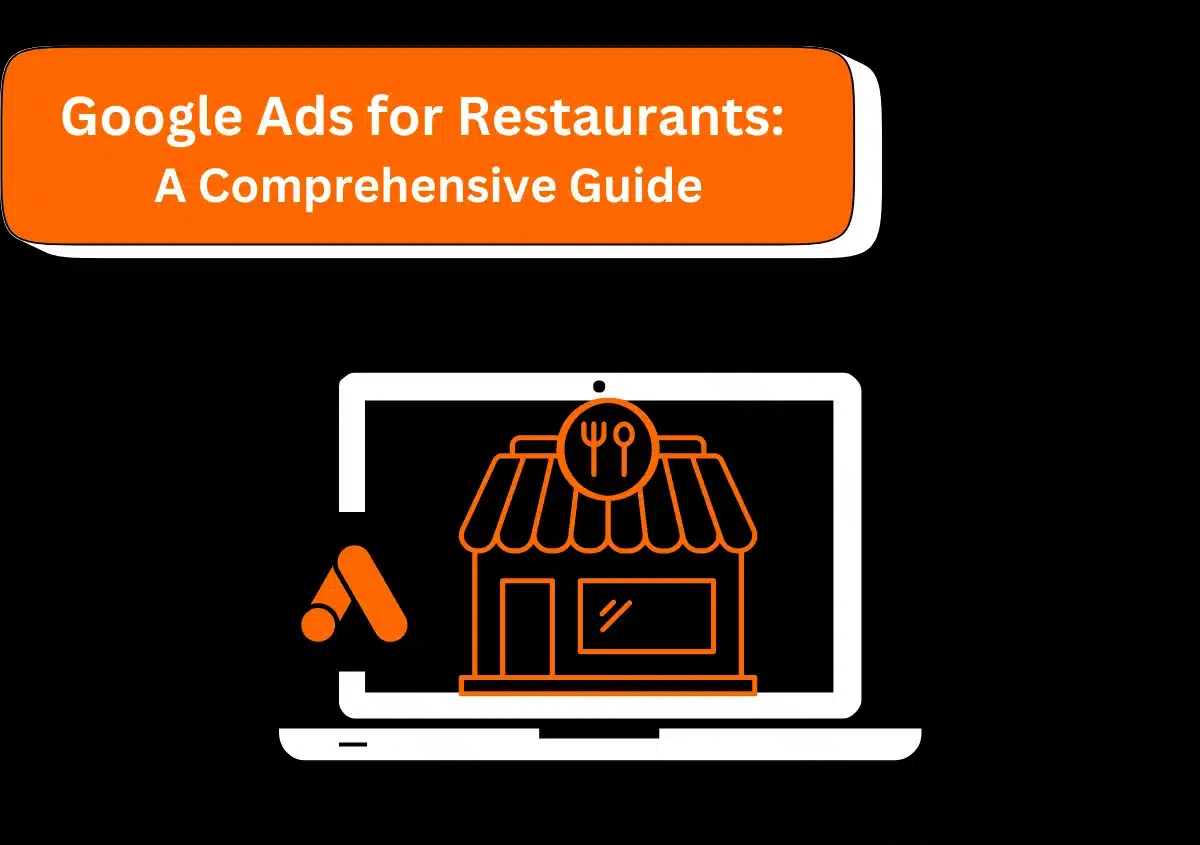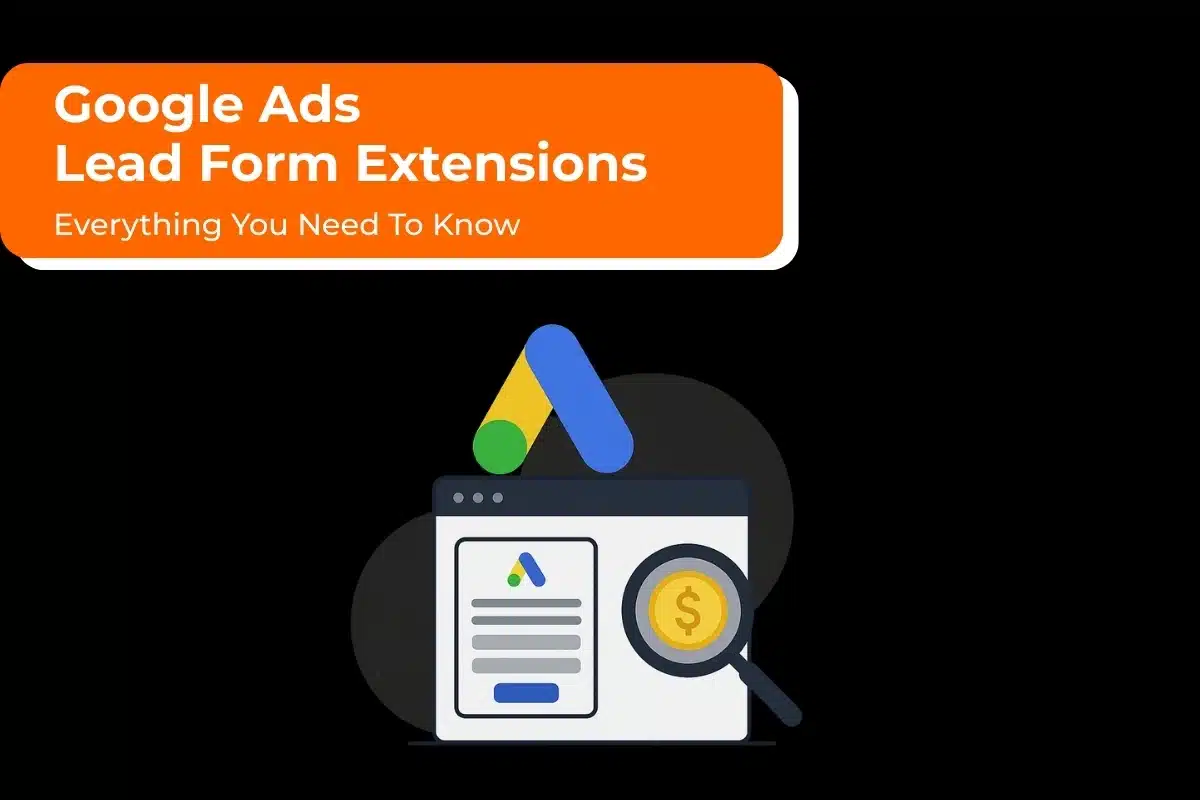You are passionate about cooking and selling the best steak in town. But if there’s no one to eat and praise it, the motivation to continue dwindles and ultimately stops. On the contrary, when people relish it, your passion for cooking and selling increases. More eaters also fetch you more revenue.
However, in every city, at least a dozen restaurants are offering the best steak in town. How can you stand out and secure footfall at your dining place? In other words, how can you target steak enthusiasts in your restaurant? That’s exactly where Google Ads can help. It lets you advertise your restaurant to the right people at the right time. That’s why so many eating joints use it as part of their digital marketing and advertising strategy.
Here’s everything you should know about leveraging Google Ads for restaurants.
Do Google Ads Work for Restaurants?
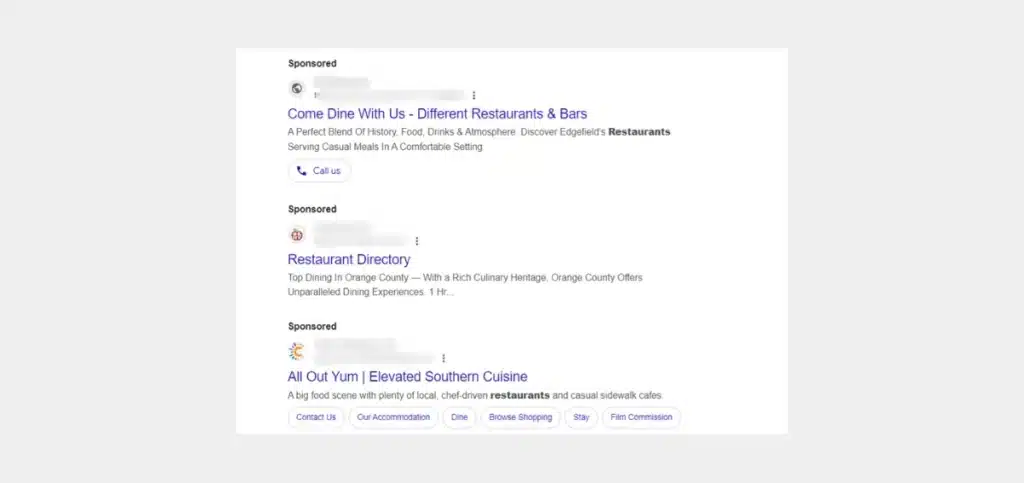
Almost all of us go online when searching for a good or new eating joint. Today, going online has become synonymous with searching on Google. More than half of the population in most major cities of the world enter search queries (or keywords) like ‘café near me’ or ‘restaurants in [insert place name].’
These search terms pull up various results. Prominently displayed at the top of Google SERP. They are better positioned to capture the searcher’s interest. The Google Ads platform gives advertisers detailed targeting options. By using them, you can display your ads in front of high-quality leads. Thus, it enables you to earn the full value of your Ads budget. A successful Google Ads campaign can earn $8 for every single dollar spent on it! So yes, Google Ads certainly works for restaurants and similar businesses.
Must Read:- How to Set Manual CPC in Google Ads?
How Google Ads Work for Restaurants?
Google Ads is a digital advertising platform through which restaurants and other businesses can display their ads on Google’s network. Restaurant ads appear as sponsored content on the top of the search result pages. They also appear on Google partner websites, such as YouTube. When someone clicks on your ad, you are charged a certain amount. However, since you only pay when you get a click.
Here are the major benefits of running an online ads campaign for a restaurant.
- Greater visibility: Ads optimized with relevant keywords appear at the top of the search engine result pages, driving more clicks. It will allow more people to learn about your services.
- Target your restaurant to the right people: Google Ads gives you the tools to target your ads to searchers genuinely interested in taking action. Depending on what you offer, you can display your ads at specific times to certain demographic groups. It increases your chances of generating high-quality leads.
- Tailor your campaigns: You are in full control of every aspect of your Google Ads campaign. You can adjust the settings however you want. For example, you can target your ads towards special events, promotions, deals, happy hours, or anything in between.
- Track and measure campaign performance for success: There are several metrics in Google Ads through which you can monitor the performance of your campaign and make necessary changes. So you can ensure that your marketing budget is yielding the desired results.
Need Help with Google Ads?
How Do You Advertise a Restaurant on Google?
Advertising through Google Ads begins with setting up your account and optimizing your ads, so they appear to the right searchers right at the time when they are eager to visit or order food. Here’s a detailed breakdown of the steps involved.
1. Set up Your Google Ads Account
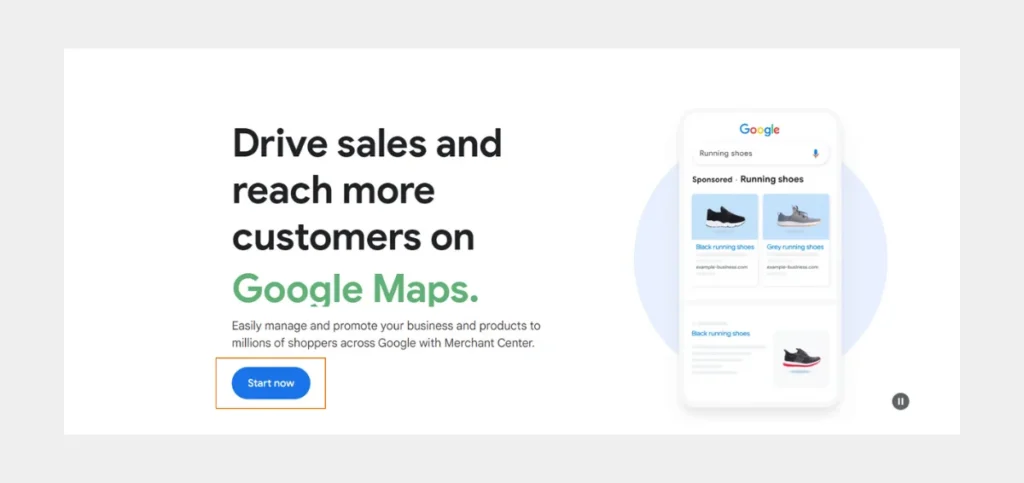
Creating an Ads account is fairly easy. Just visit ads.google.com and sign up for Google Ads. You can only sign up for Ads with an active Google account. Fill out all the needed fields, giving complete and accurate information about your restaurant.
2. Pick Your Campaign’s Objectives
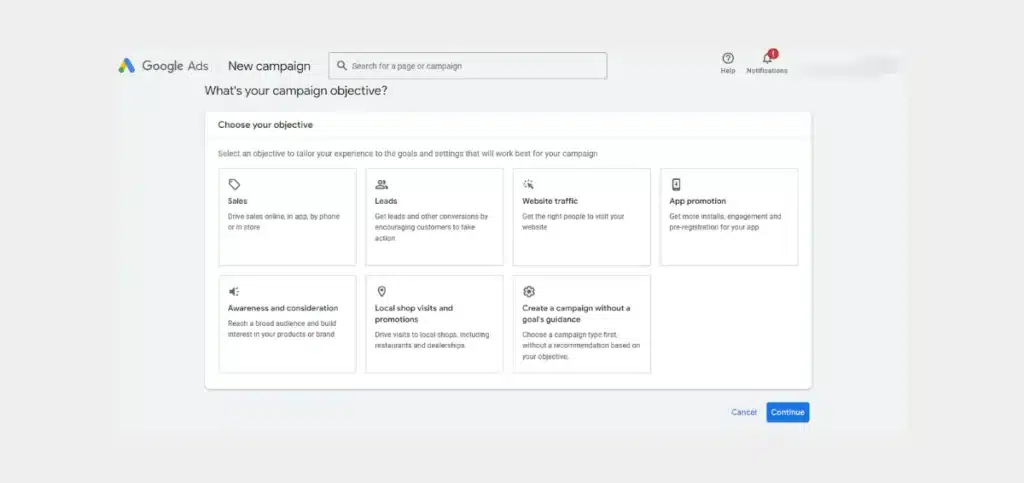
Choosing the right campaign objective is important for success. There are several objective types, each tied to a specific goal. You must choose an appropriate objective to drive prospect action.
Here are the main objectives to choose from:
- Sales: It focuses on driving transactions. This objective targets customers who are more likely to order or make a reservation.
- Leads: This campaign objective helps you get contact information of potential customers. This data can be used to build a connection with them and eventually turn them into paying customers.
- Website traffic: The objective is to increase the number of website visitors. It gives your prospects a chance to explore your restaurant’s website and learn about the types of food you offer, your specialties, etc.
- Brand awareness: It helps you spread the word about your business. The main purpose is not to get more footfall or orders but to showcase your offerings to a larger audience.
- App promotion: With this campaign objective, you encourage people to download your restaurant’s app. The more app downloads you receive, the more chances you have of getting bookings.
- Store visits: This campaign objective targets prospects within a specific radius of your restaurant. The goal is to generate a buzz around your restaurant by highlighting events or special offers. It encourages more people to visit your restaurant.
3. Set up Your Campaigns, Keywords, Ad Groups, and Ads
The next step is to organize your keywords and ads into specific, tightly-knit ad groups. This allows the search engine to understand your ads and display them to the right audience.
For example, if you are an affordable fast-food restaurant, you must create various ad groups, each with its own set of keywords and ads. You can use ad groups like ‘best coffees in (city name),’ ‘best food deals in (city name),’ ‘highest rated cheap eats in (city name), ‘ and ‘best drinks in (city name).’
4. Do Keyword Research
Building the right set of keywords is at the core of a successful ad campaign. You can start with a free tool, the Google Keywords Planner. However, as you get deep into your campaign and see positive results, it’s better to switch over to paid keyword search tools.
Here are some tips to choose the best keywords for your ads campaign.
- High average monthly search volume: You must target keywords that people frequently use to search for restaurants. However, don’t make the mistake of bidding on broad keywords with high search volume. An example is the ‘restaurant near me.’ It is very competitive and won’t give the desired results. Instead, focus on more specific, long-tail keywords like ‘French restaurant in Las Vegas.’
- Competition: A highly competitive keyword is one that your competitors are already using. It’s unlikely that you will get more leads or website visits by using such a keyword. So, focus on less competitive keywords.
- Suggested bid: This gives you an estimate of how much you would be charged if someone clicks on your ad. Conversion requires several clicks. So, figure out how much money you’ll need to spend and choose a keyword accordingly. Ideally, you must pick keywords with small cost-per-click and lower competition.
- Bid on location-specific keywords: Most of us don’t prefer traveling to another city to get our next meal. In other words, restaurant searches are location-specific. So, ensure that your location or the areas you serve are included in your keywords.
- Target keywords that indicate an intent to dine out: Not everyone who wants to dine out will look for a restaurant by typing the exact word on the search engine. Instead of entering ‘restaurant’ on Google, they might type ‘Italian cuisine near me’ or ‘best cold coffees in San Jose.’ So, think out of the box when searching for keywords.
Read Also:- How to Add Keywords to Google Ads?
5. Target Local Searchers
No one visits a restaurant more than an hour away from home. People usually search for restaurants within a convenient distance from their residences. So, set up your ads in a way that they display to people in your geographical area. As a best practice, focus on areas from where you usually get most orders.
If you have a special lunch menu, target customers not more than a mile from your location. But if your restaurant hosts events like concerts, you can target a much broader region. This is because most people don’t mind attending a concert even if it’s a bit far from their place.
On the other hand, if you own a food truck, you must target your immediate neighbourhood.
6. Set up Your Ad Schedule
As mentioned before, the Google Ads platform lets you showcase your ad to the right people at the right time. This is done via ad scheduling. If you’re a restaurant with a special brunch or lunch menu, displaying your ad to people during early or late afternoon will give you better results than displaying the ad at night. During the afternoon, your target customers are actively looking for their next meal. So you can shift your ad timings accordingly. It will help you target lunch-hour rushes and get more bookings.
A great tip is to incorporate promotions, discounts, or limited-time deals with your ad schedule. It will attract customers seeking special offers. Similarly, if you have a special event coming up, modify the ad schedule so that your ads start displaying at least 14 days before the event. It will generate a buzz around the event, ensuring more footfall.
After creating an ad schedule, adjust your bids in a way so you control how much of your budget is invested when your ads get the most clicks. For example, if you notice that most of your orders are coming during peak lunch hours, set bid adjustments so more people can see your ads during this time.
7. Use Ad Assets
Ad extensions now called assets provide additional information about your business to your target customers. They increase the likelihood of more clicks on your ad. There are 5 types of extensions you can choose depending on the goals of your PPC campaign.
- Location extensions: A location extension displays information about your business alongside your ad. So, for example, if someone searches for your Mediterranean cuisine near me, your ad will pop up along with your business address, phone number, etc. This makes it more convenient for the searcher to interact with your business.
- Call extensions: Like location extensions, a call extension displays your business phone number alongside the ad. Thus, the viewer doesn’t need to visit your website to take action. They can call you within the ad itself.
- Sitelink extension: Sitelink extensions let you link your ad to specific pages on your website. For example, you can link your menu, reservation, and special offers pages with your ad. It gives viewers easy access to all the relevant pages on your website.
- Review extension: These extensions show your restaurant’s star rating from previous customers. Good star ratings encourage searchers to click on your ad.
- Structured snippets: These snippets give the viewer additional information about your restaurant’s unique features. For example, you can display the cuisine variety you offer, the affordable prices, doorstep delivery, etc.
8. Set up Your Ads Budget
Setting up an ad budget requires considerable research into your goals and target audience. Here are some tips that will help you.
- Assuming you have done your keyword research, take your target keywords and put them into Keyword Planner. You’ll get similar keywords and search volumes for all of them. Do this for all your target keywords to find out the most effective ones for your restaurant.
- Take 10 keywords and determine how much to pay for every click. You should aim for at least 100 clicks on every ad to determine if it converts profitably for your business.
- Optimize your campaigns by paying attention to click-through rate (CTR), which tells you how many people clicked on your ad. Other metrics to focus on include cost per click (CPC), which is the amount you are charged when someone clicks on your ad, and cost per lead (CPL). The latter is the average amount you pay to get a lead.
9. Understand Bidding Strategies
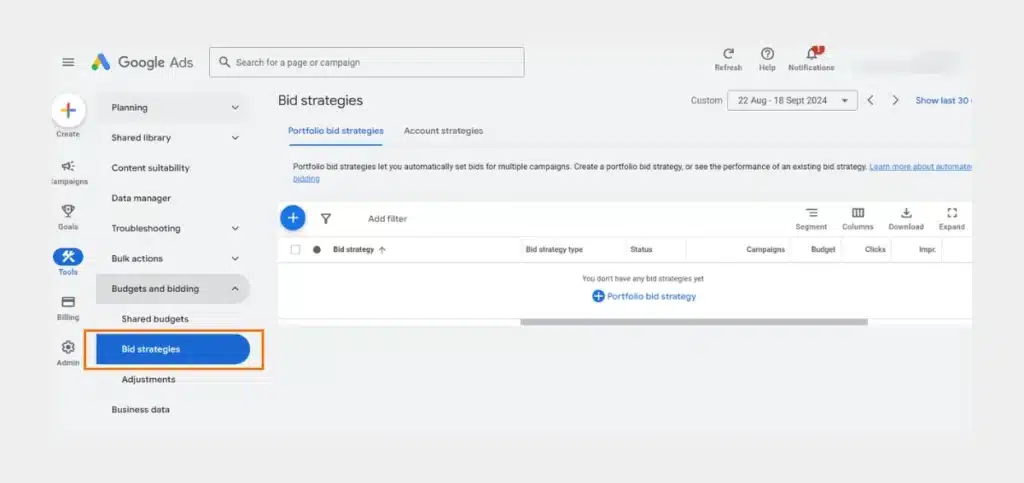
The right bidding strategy helps you maximize the return on your Google Ads spend.
- Cost-Per-Click (CPC): CPC indicates how much you pay every time your ad gets a click. It’s important to set your CPC bids strategically so you don’t drain your budget while also achieving visibility.
- Cost-Per-Thousand Impressions (CPM): CPM helps you generate brand awareness. You pay for every thousand impressions your ad receives.
- Cost-Per-Acquisition (CPA): With CPA, you pay only when the searcher takes an action after seeing and clicking on your ad. It can be anything like calling or reserving a table.
10. Monitoring and Optimizing Your Ad Investment
You want your PPC campaign to be profitable. So, it’s important to go through your investment in the campaign regularly. This will help you to take appropriate actions to optimize the ad spend so your budget is utilized for things that give you results. Here are some helpful tips:
- Monitor key performance indicators. These are click-through rate (CTR), cost-per-click (CPC), and conversion rates. It will help you gain an understanding of what’s working and what’s not.
- Reduce spending on keywords that aren’t generating leads or conversions. Instead, invest in those that fetch traffic and conversions.
- Experiment with different ads, including headlines, descriptions, and CTAs. It will help you determine which combination is performing the best and, ultimately, improve your performance.
Must Read:- What is a Good CTR (Click Through Rate) for Google Ads?
Need Help with Google Ads?
Our Proven Google Ads Strategy for Restaurants
Our ads strategy for restaurants helps them increase sales and, ultimately, get much more out of their ad spend. We create a plan that also increases their brand awareness besides more revenue. The best part is that the people our ads target don’t become one-time customers but regular, loyal fans of your restaurant.
To achieve this, we run the following two campaigns.
Campaign Strategy 1: Search Ads Focused on Keywords
Our first strategy centers around search ads optimized for your keywords, such as ‘Italian food near me; or cafe near me.’ This ensures that everyone hungry in your local area sees your keywords. Our search campaigns are effective because the ads are put in front of those actively seeking to visit or order from an eating outlet or restaurant near them.
Campaign Strategy 2: Performance Max
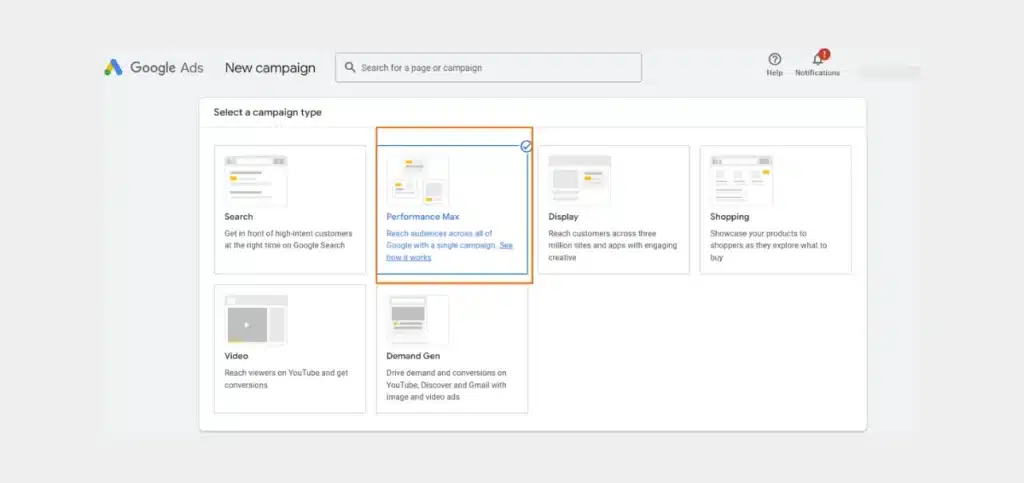
At the same time, we also run Performance Max campaigns. These campaigns increase your brand visibility and increase footfall by attracting both new and repeat customers. This campaign uses machine learning algorithms to optimize ads across different Google products. These include YouTube, Display, Search, and Discover. The messaging of our ads on all these platforms is different. It is tailored according to the audience segment so you drive maximum results.
With these two strategies, we can target people who aren’t actively searching for your services as well as those who are. Our campaigns thus target people at the top, middle, and bottom of the funnel, generating the maximum return for your ad spend.
Must Read:- Why Your Performance Max Campaign is Not Running?
How Much Does Google Ads for Restaurants Cost?
The cost of PPC campaigns relies on many things. These include your keywords’ competitiveness, location, and how much you can afford to spend. Usually, small to medium-sized restaurants can see results by spending anywhere around $10,000 to $12,000 monthly on ads.
Here are the industry benchmarks for Google Ads. Knowing them will help you get a clearer picture of what you should be aiming for.
- Average Cost Per Click (CPC): This is the amount you pay every time your ad gets a click. The average CPC for restaurants is around $1.95.
- Average Cost Per Lead (CPL): This is the amount you pay to obtain a lead through ads. A lead can be anyone who makes a reservation, signs up an inquiry form, or places an online order. The average CPL is around $34.81 for restaurants.
- Average Click-Through Rate (CTR): This indicates how many people came across your ad and clicked on it. A higher CTR percentage is indicative of your ad being relevant to your audience. The average percentage for this metric for restaurants is approximately 8.65%.
- Average Conversion Rate: This is the percentage of searchers who not only click on your ad but also take the desired action that drives revenue. For example, making a reservation or placing an order. The average of this metric is estimated to be 5.06% for restaurants.
Achieve Success with Google Ads for Restaurants
Google Ads can help restaurants increase orders and footfall. However, it’s important to learn how to use them effectively. Simply investing more money won’t give you the desirable return. If you feel overwhelmed, it’s better to hire a professional PPC agency to take care of your ads. PPC experts at Website Pandas leverage your restaurant’s data and business goals to maximize ROI and help your business grow. Stop wasting money on unfruitful PPC campaigns. Use our experience and skills to turn clicks into customers.
Need Help with Google Ads?

